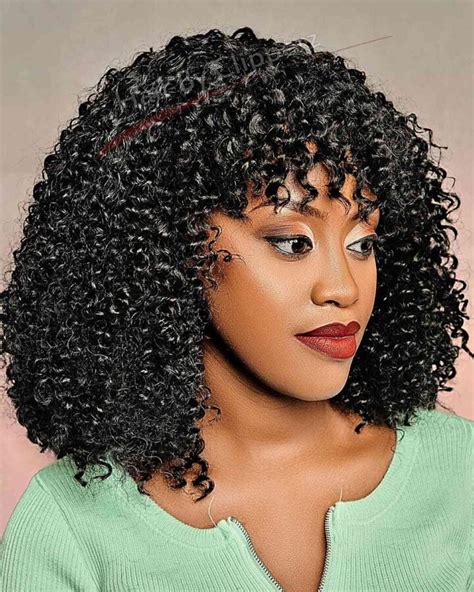5 Best Weaves for Fine Hair: A Comprehensive Guide

Fine hair can be a blessing and a curse. While it’s often soft and silky, it can also lack volume and thickness. Fortunately, weaves offer a solution for those looking to add fullness and style to their fine locks.
In this comprehensive guide, we’ll explore the five best weaves for fine hair, breaking down their benefits, techniques, and maintenance tips.
1. Micro Link Weave
- Benefits: Ultra-lightweight and natural-looking; minimal tension on hair
- Procedure: Tiny metal links or silicone beads are clamped around sections of hair and extensions
- Maintenance: Requires regular retightening every 6-8 weeks; daily brushing and detangling
2. Fusion Weave
- Benefits: Long-lasting (up to 6 months); creates seamless volume
- Procedure: Extensions are bonded to natural hair using a heated adhesive
- Maintenance: Requires professional removal; can damage hair if reinstallation is not done correctly
3. Tape-In Weave
- Benefits: Quick and easy to install; less damaging than fusion and micro link weaves
- Procedure: Extensions are attached to natural hair using double-sided tape
- Maintenance: Las lasts 6-8 weeks; requires regular repositioning and removal of old tape
4. Sew-In Weave
- Benefits: Versatile and affordable; provides a secure hold for thick extensions
- Procedure: Extensions are sewn onto tracks or cornrows that have been braided into natural hair
- Maintenance: Requires regular retightening and thorough washing and conditioning
5. Clip-In Weave
- Benefits: Non-permanent and easy to use; perfect for occasional volume or length
- Procedure: Extensions are attached to natural hair using clips
- Maintenance: No professional maintenance required; can be removed and reused as needed
The ideal weave for you will depend on your hair type, desired volume, and budget. Consider the following factors when making your decision:
- Hair texture: Fine hair works best with lightweight and low-tension weaves like micro link or tape-in weaves.
- Volume: Micro link, fusion, and sew-in weaves can provide maximum volume, while clip-in weaves offer a temporary solution.
- Damage risk: Fusion and micro link weaves can cause more damage to fine hair, so consider less invasive options like tape-in or clip-in weaves.
To maintain the health of your fine hair while wearing a weave, follow these tips:
- Use gentle products: Avoid harsh shampoos and conditioners that can strip hair of essential oils.
- Detangle regularly: Brush or comb your hair daily to remove knots and prevent breakage.
- Avoid heat: Overuse of heat styling tools can damage hair and loosen the weave.
- Get regular trims: Remove split ends to prevent further breakage.
- Sleep with a silk pillowcase: Silk reduces friction, preventing hair damage and tangles.
- Overtightening: Excessive tension can damage fine hair, leading to breakage and thinning.
- Neglecting maintenance: Regular retightening and thorough cleaning is crucial for the longevity and health of your hair.
- Using low-quality extensions: Cheap extensions can cause tangles, breakage, and an unnatural appearance.
- Over-styling: Avoid overusing heat styling tools, as this can weaken the hair and damage the weave.
- Ignoring scalp care: Healthy hair requires a healthy scalp. Wash your hair regularly with a gentle shampoo and use a scalp treatment to promote growth and prevent irritation.
Beyond adding volume and length, weaves can also be used for creative applications:
- Ombre or Balayage: Create a gradual color transition using different shades of extensions.
- Lengthening Bangs: Achieve longer bangs without cutting your natural hair.
- Adding Highlights or Lowlights: Enhance hair color with extensions that add natural-looking highlights or lowlights.
- Covering Gray Hair: Use weaves to blend gray hair or cover unwanted regrowth.
- Creating Temporary Hair Art: Use weaves to experiment with colorful or patterned designs on your hair.
To help you make an informed decision, refer to the following comparison tables:
Table 1: Weave Types and Suitability
| Weave Type | Fine Hair | Advantages | Disadvantages |
|---|---|---|---|
| Micro Link | Yes | Ultra-lightweight, natural-looking | High maintenance, can damage hair if not installed correctly |
| Fusion | Yes (with caution) | Long-lasting, seamless volume | Can cause hair damage, requires professional removal |
| Tape-In | Yes | Quick and easy to install, less damaging | Requires regular repositioning, shorter lifespan |
| Sew-In | Yes | Versatile, provides secure hold | Can be uncomfortable, requires regular retightening |
| Clip-In | Yes | Non-permanent, easy to use | Temporary solution, may slip or cause tension |
Table 2: Weave Prices and Lifespan
| Weave Type | Cost | Lifespan |
|---|---|---|
| Micro Link | $200-$600 | 3-4 months |
| Fusion | $300-$900 | 4-6 months |
| Tape-In | $150-$400 | 6-8 weeks |
| Sew-In | $100-$300 | 2-3 months |
| Clip-In | $50-$200 | As needed |
Table 3: Hair Texture and Weave Compatibility
| Hair Texture | Compatible Weaves |
|---|---|
| Straight | Micro link, tape-in, fusion, sew-in, clip-in |
| Wavy | Micro link, tape-in, sew-in, clip-in |
| Curly | Micro link, tape-in, sew-in (with caution) |
| Coily | Micro link (with caution), tape-in (with caution) |
Table 4: Weave Maintenance Requirements
| Weave Type | Maintenance Frequency |
|---|---|
| Micro Link | Every 6-8 weeks |
| Fusion | Every 3-4 months |
| Tape-In | Every 6-8 weeks |
| Sew-In | Every 2-3 weeks |
| Clip-In | No professional maintenance required |
With the right knowledge and care, fine hair can benefit greatly from weaves. By choosing the best weave for your hair type and following proper maintenance techniques, you can enhance volume, length, and style without compromising the health of your locks. Remember to consult with a professional hairstylist for personalized advice and installation.
